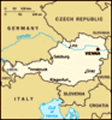Advertisement
Published: September 28th 2009

 Gate
Gate
The gate boasts the motto "Arbeit Macht Frei" (Work Makes You Free).I’ve had some time to reflect on my visit to Dachau this morning. I’ve been searching for words to describe the experience. I’m still struggling.
Dachau was the oldest and longest running concentration camp in the Third Reich. It opened in 1933 and operated for 12 years. The camp’s intent was primarily as a work camp (in essence for slave labor) which initially housed “career criminals”. Its scope grew as more and more groups were identified as targets - Jews, gypsies, political prisoners, Eastern Europeans, emigrants (those who left Germany and returned), asocials (those that were deemed to have disorders since they disagreed with the Nazi party), priests and homosexuals.
Dachau is considered a work camp, as opposed to an extermination camp, such as Auschwitz, where prisoners were sent to be killed. However, while the camp was deemed a work camp, it still had an extermination element to it. Its residents were worked to death, beaten and tortured to the point where they couldn’t work (and thus were executed), had deadly medical experiments performed on them and often committed suicide by jumping into the electric fence.
And it was one of many camps. While we only hear of

 Crematorium
Crematorium
Two of the furnaces used to cremate the dead.a few and figure there are a few more, there were more than 500 camps, many of them built well prior to the official start of the war in 1939.
Something that I learned through the tour process that I hadn’t really heard addressed in any films or documentaries was how the system got started and how the people could let it exist.
It was initially intended as a “cheap labor” system to improve Germany’s infrastructure so Hitler could prepare for war (keep in mind this is six years prior to the start of the war). But Germany was still under the regulation of the Treaty of Versailles from WWII, which severely restricted its ability to do anything close to creating a war machine. It, of course, got around this with its deceitful justification on improving the infrastructure for the betterment of its own economy.
The use of the camps became a critical part of the creation of this infrastructure. To justify the labor, the camps provided misleading information to the local press on their purpose, stating that the productivity would be good for the German people and they were simultaneously rehabilitating the “criminals” within its walls.

 Map
Map
This map shows the locations of all the concentration camps that were spread throughout Europe.By proactively releasing select and misleading information on the system, its management didn’t face any questioning. In fact, its leaders were lauded.
Ultimately, I wasn’t nearly as moved seeing Dachau as I was with the depiction in the
Why We Fight episode of
Band of Brothers. It really seemed more like a documentary as we got a grasp on the history and saw the compound and plenty of photos on the aftermath. But it will no doubt have a lasting effect as I now understand it much better.
What scenes in films do best is draw out an emotional reaction. Documentaries spew out facts. My visit helped me realize just how massive the camp system was (both the sheer size of this camp and the size of the system itself). And it provided me with a better understanding of how something such as this could actually come about.
When we were waiting to catch the subway back from Dachau, I spoke with a few guys from the tour group that had just flown in out of Philly. I asked where they were from and it turns out that they’re from West Chester, PA. One of them knew Reading really well as he had helped develop the Flying Hills area years ago.
The tour finished up back at the train station where I had stored my luggage that morning. I caught my train shortly thereafter and headed to Salzburg, Austria.
Salzburg is the birthplace of Wolfgang Amadeus Mozart and, even more notably, where
The Sound of Music took place.
There are numerous tours available here, many of which are centered on the movie. There are also tours of the city, down to Berchtesgaden and Eagle’s Nest and of the nearby salt mines. So I’ll be busy the next few days.
Around 8:00, when I was on my computer at the hostel, I noticed a group gathering nearby and getting prepared to watch the TV. They were putting on
The Sound of Music. Perfect - it’s been a long time since I’ve seen it so this would be a good refresher for the tours.
I had a blast watching it. Everyone was into it and we had some good laughs at a couple of the cornier parts. Now I’m really excited for the tour. This was just what I needed.
Tomorrow I’m doing my second to last long run in the morning then doing a city tour in the afternoon.
Advertisement
Tot: 0.156s; Tpl: 0.011s; cc: 10; qc: 61; dbt: 0.0902s; 1; m:domysql w:travelblog (10.17.0.13); sld: 1;
; mem: 1.2mb







